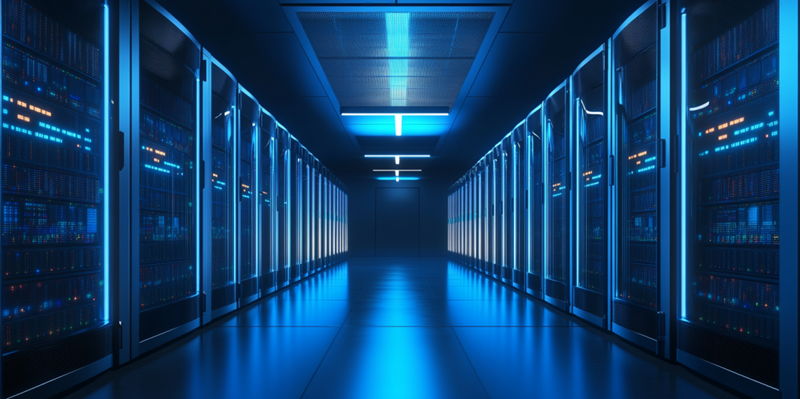The demand for data centers is skyrocketing due to economic, societal, and technological factors such as the growth of electric vehicle adoption, cloud computing, AI, and the proliferation of connected devices. The United States leads this global surge, boasting over 5,000 data centers by 2023, a far cry from its closest competitor, Germany. This trend isn’t showing any signs of slowing down.The data center supply under construction in North America’s top markets increased by nearly 70 percent in 2024 compared to the previous year. In just the first half of 2024, over 500 megawatts of new data centers were introduced in the U.S. and Canada, leading to a 10 percent growth in new data center inventory.
However, these data centers demand more than just space—they require a stable and uninterrupted power supply to function effectively. Power outages, even brief ones, can cause disruptions that are costly and sometimes life-threatening. As the demand for more data centers grows, so does the need for reliable backup power systems to avoid such catastrophic outcomes. But the quest for a stable power supply often clashes with the need to minimize environmental impact, particularly regarding greenhouse gas emissions. Despite the pressure to continue this growth trajectory, major data center companies like Amazon Web Services, Google Cloud, and Microsoft Azure are committed to ambitious environmental, social, and governance (ESG) targets, pushing for carbon-free operations and 100 percent renewable energy sources.
Utilizing Sustainable Fuels for Modern Diesel Engines
One effective way to balance the increasing power demands with environmental concerns is by employing modern diesel engines that can run on sustainable fuels like Hydrotreated Vegetable Oil (HVO). HVO is derived from renewable raw materials, significantly reducing greenhouse gas emissions compared to traditional fossil fuels. Tests have shown that HVO can replace conventional diesel without sacrificing performance—there’s no power loss, and metrics like maximum power, load acceptance, and fuel consumption remain consistent with those of fossil diesel.
The transition to HVO presents a sustainable solution without requiring any modifications to existing engine setups. Because HVO fuels generate almost negligible greenhouse gas emissions during production, transport, and combustion, they offer a viable path for reducing the carbon footprint of data centers. This kind of fuel flexibility ensures that data centers can continue growing without contributing heavily to environmental degradation, maintaining a balance between operational reliability and sustainability.
Moreover, the ability to switch seamlessly to renewable fuels without extensive system overhauls makes this an attractive option for data centers keen on meeting their ESG targets. This kind of adaptability not only helps in reducing immediate emissions but also paves the way for future advancements in sustainable energy.
Extending Test Run Intervals
Another viable method for reducing emissions is extending the test run intervals for backup generators from monthly to quarterly. Normally, to ensure the readiness of emergency backup power systems, data centers conduct test runs once a month. These tests are essential for checking the system’s reliability and performance, ensuring that the generators can take over swiftly during an actual power outage. However, these frequent tests also lead to substantial fuel consumption and emissions.
Innovations such as interval pre-lubrication pumps can enable this shift in testing frequency. These pumps lubricate the generator engine and periodically circulate oil through the system, maintaining a layer on critical components and ensuring the unit is ready to start immediately. This technology not only reduces wear and tear but also significantly cuts down on the emissions associated with frequent test runs.
By reducing the number of these test runs from twelve per year to four, emissions related to the process can be cut by up to two-thirds. This significant reduction is not just a win for the environment but also a strategic advantage for data centers, which often face stringent limits on allowed emissions. Such innovations in maintenance protocols help ensure that emergency systems remain reliable while also contributing to environmental sustainability goals.
Incorporating Custom After-Treatment Systems
The demand for data centers is surging due to factors like the rise of electric vehicles, cloud computing, AI, and the expansion of connected devices. The U.S. is leading this trend, with over 5,000 data centers by 2023, significantly outpacing Germany. This rapid growth shows no signs of letting up. Data center supply under construction in North America’s top markets grew nearly 70 percent in 2024 compared to 2023. In just the first half of 2024, over 500 megawatts of new data centers were added in the U.S. and Canada, resulting in a 10 percent rise in new data center capacity.
Yet, these facilities need more than space—they require a stable, uninterrupted power supply to operate effectively. Even brief power outages can cause costly, sometimes life-threatening disruptions. As the demand for data centers increases, so does the need for dependable backup power to prevent catastrophic failures. This is balanced by the need to minimize environmental impact, especially regarding greenhouse gas emissions. Major companies like Amazon Web Services, Google Cloud, and Microsoft Azure are committed to ambitious ESG targets, aiming for carbon-free operations and 100 percent renewable energy.

